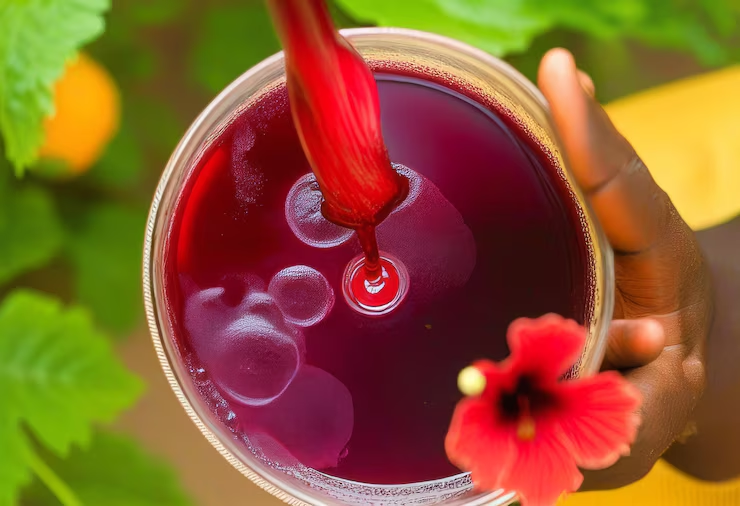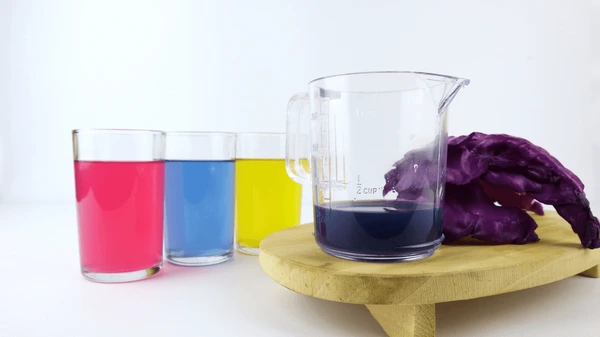Understanding the acidity or alkalinity of substances is fundamental in science, agriculture, environmental monitoring, and even cooking. While synthetic pH indicators are common, natural pH indicators provide a safer, eco-friendly, and often visually stunning alternative. In this comprehensive guide, we delve into the world of natural pH indicators, how they work, where to find them, how to extract them, and why they matter.
Introduction to Natural pH Indicators
Natural pH indicators a substance derived from plants or other natural sources that changes color when exposed to acidic or basic environments. These indicators contain pigments, primarily anthocyanins, which react to changes in pH by altering their molecular structure, resulting in a visible color shift.
Natural indicators are especially useful in educational settings, eco-conscious labs, and DIY experiments. They’re biodegradable, non-toxic, and often available at no cost.
Role of Indicators in Chemistry
Indicators are compounds that alter their color depending on the pH level of the solution they’re introduced to. This color change helps us easily identify whether a substance is acidic or basic. While traditional indicators, such as litmus paper, are synthetically produced, natural indicators are extracted from plant-based sources.
How Do Natural pH Indicators Work?
The science behind natural indicators lies in acid-base chemistry. Many natural substances contain pigments that are sensitive to hydrogen ion (H⁺) concentration. When placed in a solution, the pigment’s structure changes depending on the pH, leading to a distinct color change.
Anthocyanins: The Power Behind the Color

Anthocyanins are water-soluble pigments found in the vacuoles of plant cells. They appear red in acidic conditions (low pH), purple in neutral solutions, and green or yellow in basic conditions (high pH). Their vivid color transitions make them ideal as natural indicators.
Best Sources of Natural pH Indicators
There are several household and garden items rich in pigments that can act as natural indicators. Below are some of the most effective and accessible:
1. Red Cabbage
Red cabbage is the most popular and reliable natural pH indicator. It contains a high concentration of anthocyanins and covers a broad pH range with striking color transitions:
- Acidic (pH 1–4): Red to pink
- Neutral (pH 7): Purple
- Basic (pH 8–14): Blue to green to yellow
2. Beetroot
Beetroot contains betalain pigments, which are less sensitive to pH but still offer some color variation. Beetroot indicators are best for identifying strongly acidic or strongly basic conditions.
3. Hibiscus Petals

Hibiscus flowers are rich in anthocyanins. Dried or fresh petals can be steeped in hot water to extract the indicator solution. Hibiscus indicators turn red in acidic and green in alkaline solutions.
4. Turmeric
Turmeric contains curcumin, which is yellow in acidic and neutral solutions but turns reddish-brown in basic solutions. It is highly sensitive and commonly used in paper strip indicators.
5. Blueberries and Blackberries
These fruits, like red cabbage, are loaded with anthocyanins. The juice from these berries acts as a pH-sensitive dye and is useful in artistic chemistry demonstrations.
How to Extract Natural pH Indicators
The extraction process is simple and can be done using basic kitchen tools. Here’s a general method applicable to most sources:
Materials Needed:
- Plant material (e.g., red cabbage, hibiscus petals)
- Knife and cutting board
- Boiling water
- Blender (optional)
- Filter paper or fine strainer
- Glass containers
Steps to Extract:
- Chop the plant material into small pieces to increase surface area.
- Boil or soak in hot water for 10–15 minutes.
- Allow the mixture to cool.
- Strain to remove solid residues, leaving behind the colored extract.
- Store the extract in a sealed container in the refrigerator for future use.
Testing pH Using Natural Indicators
To test a solution’s pH, simply add a few drops of the indicator extract and observe the color change.
Examples:
- Lemon juice (acidic): Red cabbage turns pink
- Baking soda solution (basic): Red cabbage turns green
- Vinegar (acidic): Turmeric remains yellow
- Soapy water (basic): Turmeric turns brownish-red
For more accurate analysis, create a color scale chart using household acids and bases with known pH values and compare test results.
Creating Natural pH Indicator Paper
Natural indicators can be used to make pH test strips, ideal for field use or classroom experiments.
Procedure:
- Soak filter paper or coffee filters in the indicator solution.
- Remove excess solution and lay the paper flat to dry.
- Once dry, cut into strips and store in an airtight container.
Immerse the strip in the solution you want to test, then match the color change to your reference chart to identify the pH level.
Common Natural pH Indicators and Their Sources
| Natural Indicator | Source Plant | Color in Acid | Color in Base |
|---|---|---|---|
| Red Cabbage | Anthocyanins | Reddish-pink | Green/blue |
| Beetroot | Betalains | Purple | Yellowish |
| Turmeric | Curcumin | Yellow | Reddish-brown |
| Hibiscus | Anthocyanins | Red | Dark green |
| Blueberries | Anthocyanins | Red | Purple/green |
Applications of Natural pH Indicators
Natural indicators find applications across various domains:
1. Education

They are ideal for demonstrating acid-base reactions in schools and science fairs due to their low cost and safety.
2. Environmental Science
Used for testing soil pH and water bodies, which influence plant growth and aquatic life.
3. Food Industry
Natural indicators help check the freshness and spoilage of food items, especially in packaging innovations.
4. Art and Design
Due to their vibrant and pH-sensitive nature, they are sometimes used in eco-friendly art projects and bio-dyeing.
pH Color Chart for Natural Indicators
| pH Level | Red Cabbage Color | Turmeric Color |
|---|---|---|
| 1-3 (Strong Acid) | Red | Yellow |
| 4-6 (Weak Acid) | Purple | Yellow |
| 7 (Neutral) | Violet | Yellow |
| 8-10 (Weak Base) | Blue | Orange |
| 11-14 (Strong Base) | Greenish-yellow | Reddish-brown |
Advantages of Using Natural pH Indicators
- Eco-friendly and biodegradable
- Safe for use by children and in home settings
- Cost-effective with materials found in most kitchens or gardens
- Engaging visual demonstration of chemical principles
- Encourage sustainable and green chemistry practices
Limitations to Consider
While natural indicators offer many benefits, they are not as precise as their synthetic counterparts:
- Color transitions can be subjective and may vary with concentration
- Short shelf-life if not refrigerated
- Less effective at narrow pH intervals
- Light-sensitive and prone to degradation over time
Conclusion
Natural pH indicators are a powerful and sustainable tool for exploring acid-base chemistry. They are easy to make, safe to use, and provide vivid, memorable demonstrations. From red cabbage to turmeric, these household materials can open a world of scientific discovery while minimizing environmental impact.
If you’re looking for an eco-friendly, educational, and fun way to test pH, natural indicators offer the perfect solution.
How to prepare natural pH indicators?
Understanding the acidity or alkalinity of substances is fundamental in science, agriculture, environmental monitoring, and even cooking. While synthetic pH indicators are common, natural pH indicators provide a safer, eco-friendly, and often visually stunning alternative. In this comprehensive guide, we delve into the world of natural pH indicators, how they work, where to find them, how to extract them, and why they matter.
Introduction to Natural pH Indicators
Natural pH indicators a substance derived from plants or other natural sources that changes color when exposed to acidic or basic environments. These indicators contain pigments, primarily anthocyanins, which react to changes in pH by altering their molecular structure, resulting in a visible color shift.
Natural indicators are especially useful in educational settings, eco-conscious labs, and DIY experiments. They’re biodegradable, non-toxic, and often available at no cost.
Role of Indicators in Chemistry
Indicators are compounds that alter their color depending on the pH level of the solution they’re introduced to. This color change helps us easily identify whether a substance is acidic or basic. While traditional indicators, such as litmus paper, are synthetically produced, natural indicators are extracted from plant-based sources.
How Do Natural pH Indicators Work?
The science behind natural indicators lies in acid-base chemistry. Many natural substances contain pigments that are sensitive to hydrogen ion (H⁺) concentration. When placed in a solution, the pigment’s structure changes depending on the pH, leading to a distinct color change.
Anthocyanins: The Power Behind the Color
Anthocyanins are water-soluble pigments found in the vacuoles of plant cells. They appear red in acidic conditions (low pH), purple in neutral solutions, and green or yellow in basic conditions (high pH). Their vivid color transitions make them ideal as natural indicators.
Best Sources of Natural pH Indicators
There are several household and garden items rich in pigments that can act as natural indicators. Below are some of the most effective and accessible:
1. Red Cabbage
Red cabbage is the most popular and reliable natural pH indicator. It contains a high concentration of anthocyanins and covers a broad pH range with striking color transitions:
Acidic (pH 1–4): Red to pink
Neutral (pH 7): Purple
Basic (pH 8–14): Blue to green to yellow
2. Beetroot
Beetroot contains betalain pigments, which are less sensitive to pH but still offer some color variation. Beetroot indicators are best for identifying strongly acidic or strongly basic conditions.
3. Hibiscus Petals
Hibiscus flowers are rich in anthocyanins. Dried or fresh petals can be steeped in hot water to extract the indicator solution. Hibiscus indicators turn red in acidic and green in alkaline solutions.
4. Turmeric
Turmeric contains curcumin, which is yellow in acidic and neutral solutions but turns reddish-brown in basic solutions. It is highly sensitive and commonly used in paper strip indicators.
5. Blueberries and Blackberries
These fruits, like red cabbage, are loaded with anthocyanins. The juice from these berries acts as a pH-sensitive dye and is useful in artistic chemistry demonstrations.
How to Extract Natural pH Indicators
The extraction process is simple and can be done using basic kitchen tools. Here’s a general method applicable to most sources:
Materials Needed:
Plant material (e.g., red cabbage, hibiscus petals)
Knife and cutting board
Boiling water
Blender (optional)
Filter paper or fine strainer
Glass containers
Steps to Extract:
Chop the plant material into small pieces to increase surface area.
Boil or soak in hot water for 10–15 minutes.
Allow the mixture to cool.
Strain to remove solid residues, leaving behind the colored extract.
Store the extract in a sealed container in the refrigerator for future use.
Testing pH Using Natural Indicators
To test a solution’s pH, simply add a few drops of the indicator extract and observe the color change.
Examples:
Lemon juice (acidic): Red cabbage turns pink
Baking soda solution (basic): Red cabbage turns green
Vinegar (acidic): Turmeric remains yellow
Soapy water (basic): Turmeric turns brownish-red
For more accurate analysis, create a color scale chart using household acids and bases with known pH values and compare test results.
Creating Natural pH Indicator Paper
Natural indicators can be used to make pH test strips, ideal for field use or classroom experiments.
Procedure:
Soak filter paper or coffee filters in the indicator solution.
Remove excess solution and lay the paper flat to dry.
Once dry, cut into strips and store in an airtight container.
Immerse the strip in the solution you want to test, then match the color change to your reference chart to identify the pH level.
Common Natural pH Indicators and Their Sources
| Natural Indicator | Source Plant | Color in Acid | Color in Base |
|---|---|---|---|
| Red Cabbage | Anthocyanins | Reddish-pink | Green/blue |
| Beetroot | Betalains | Purple | Yellowish |
| Turmeric | Curcumin | Yellow | Reddish-brown |
| Hibiscus | Anthocyanins | Red | Dark green |
| Blueberries | Anthocyanins | Red | Purple/green |
Applications of Natural pH Indicators
Natural indicators find applications across various domains:
1. Education
They are ideal for demonstrating acid-base reactions in schools and science fairs due to their low cost and safety.
2. Environmental Science
Used for testing soil pH and water bodies, which influence plant growth and aquatic life.
3. Food Industry
Natural indicators help check the freshness and spoilage of food items, especially in packaging innovations.
4. Art and Design
Due to their vibrant and pH-sensitive nature, they are sometimes used in eco-friendly art projects and bio-dyeing.
pH Color Chart for Natural Indicators
| pH Level | Red Cabbage Color | Turmeric Color |
|---|---|---|
| 1-3 (Strong Acid) | Red | Yellow |
| 4-6 (Weak Acid) | Purple | Yellow |
| 7 (Neutral) | Violet | Yellow |
| 8-10 (Weak Base) | Blue | Orange |
| 11-14 (Strong Base) | Greenish-yellow | Reddish-brown |
Advantages of Using Natural pH Indicators
Eco-friendly and biodegradable
Safe for use by children and in home settings
Cost-effective with materials found in most kitchens or gardens
Engaging visual demonstration of chemical principles
Encourage sustainable and green chemistry practices
Limitations to Consider
While natural indicators offer many benefits, they are not as precise as their synthetic counterparts:
Color transitions can be subjective and may vary with concentration
Short shelf-life if not refrigerated
Less effective at narrow pH intervals
Light-sensitive and prone to degradation over time
Conclusion
Natural pH indicators are a powerful and sustainable tool for exploring acid-base chemistry. They are easy to make, safe to use, and provide vivid, memorable demonstrations. From red cabbage to turmeric, these household materials can open a world of scientific discovery while minimizing environmental impact.
If you’re looking for an eco-friendly, educational, and fun way to test pH, natural indicators offer the perfect solution.
Is turmeric a pH indicator?
Turmeric contains curcumin, which is yellow in acidic and neutral solutions but turns reddish-brown in basic solutions. It is highly sensitive and commonly used in paper strip indicators.
What plant is a natural pH indicator?
Beetroot contains betalain pigments, which are less sensitive to pH but still offer some color variation. Beetroot indicators are best for identifying strongly acidic or strongly basic conditions.
What are natural pH indicators?
There are several household and garden items rich in pigments that can act as natural indicators. Below are some of the most effective and accessible:
1. Red Cabbage
Red cabbage is the most popular and reliable natural pH indicator. It contains a high concentration of anthocyanins and covers a broad pH range with striking color transitions:
Acidic (pH 1–4): Red to pink
Neutral (pH 7): Purple
Basic (pH 8–14): Blue to green to yellow
2. Beetroot
Beetroot contains betalain pigments, which are less sensitive to pH but still offer some color variation. Beetroot indicators are best for identifying strongly acidic or strongly basic conditions.
3. Hibiscus Petals
Hibiscus flowers are rich in anthocyanins. Dried or fresh petals can be steeped in hot water to extract the indicator solution. Hibiscus indicators turn red in acidic and green in alkaline solutions.
4. Turmeric
Turmeric contains curcumin, which is yellow in acidic and neutral solutions but turns reddish-brown in basic solutions. It is highly sensitive and commonly used in paper strip indicators.
5. Blueberries and Blackberries
These fruits, like red cabbage, are loaded with anthocyanins. The juice from these berries acts as a pH-sensitive dye and is useful in artistic chemistry demonstrations.
How to Extract Natural pH Indicators
The extraction process is simple and can be done using basic kitchen tools. Here’s a general method applicable to most sources:
Materials Needed:
Plant material (e.g., red cabbage, hibiscus petals)
Knife and cutting board
Boiling water
Blender (optional)
Filter paper or fine strainer
Glass containers
Steps to Extract:
Chop the plant material into small pieces to increase surface area.
Boil or soak in hot water for 10–15 minutes.
Allow the mixture to cool.
Strain to remove solid residues, leaving behind the colored extract.
Store the extract in a sealed container in the refrigerator for future use.
Testing pH Using Natural Indicators
To test a solution’s pH, simply add a few drops of the indicator extract and observe the color change.
Examples:
Lemon juice (acidic): Red cabbage turns pink
Baking soda solution (basic): Red cabbage turns green
Vinegar (acidic): Turmeric remains yellow
Soapy water (basic): Turmeric turns brownish-red
For more accurate analysis, create a color scale chart using household acids and bases with known pH values and compare test results.
Creating Natural pH Indicator Paper
Natural indicators can be used to make pH test strips, ideal for field use or classroom experiments.
Procedure:
Soak filter paper or coffee filters in the indicator solution.
Remove excess solution and lay the paper flat to dry.
Once dry, cut into strips and store in an airtight container.
Immerse the strip in the solution you want to test, then match the color change to your reference chart to identify the pH level.
Common Natural pH Indicators and Their Sources
| Natural Indicator | Source Plant | Color in Acid | Color in Base |
|---|---|---|---|
| Red Cabbage | Anthocyanins | Reddish-pink | Green/blue |
| Beetroot | Betalains | Purple | Yellowish |
| Turmeric | Curcumin | Yellow | Reddish-brown |
| Hibiscus | Anthocyanins | Red | Dark green |
| Blueberries | Anthocyanins | Red | Purple/green |
What plant is a natural pH indicator and can be prepared at home?
Red cabbage is the most popular and reliable natural pH indicator. It contains a high concentration of anthocyanins and covers a broad pH range with striking color transitions:
Acidic (pH 1–4): Red to pink
Neutral (pH 7): Purple
Basic (pH 8–14): Blue to green to yellow
